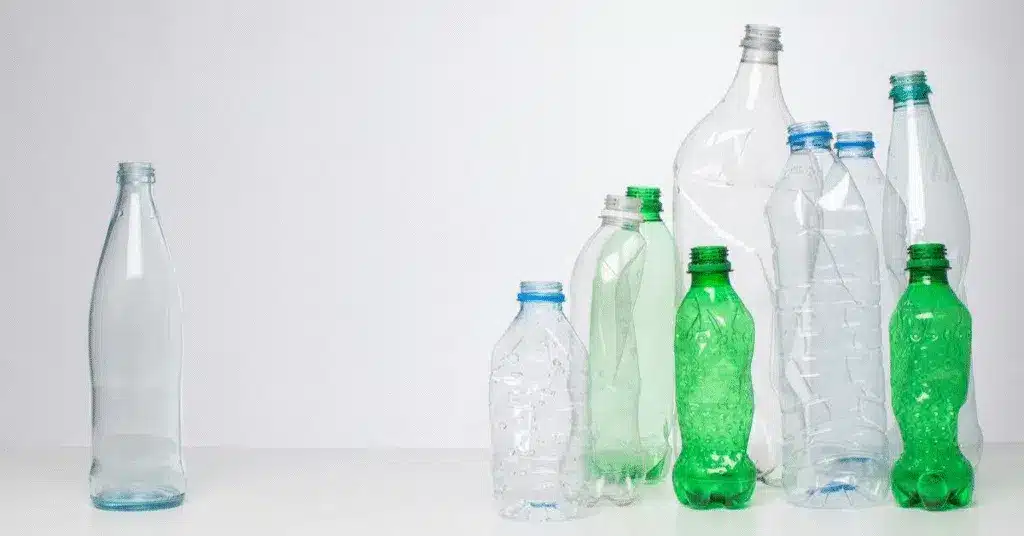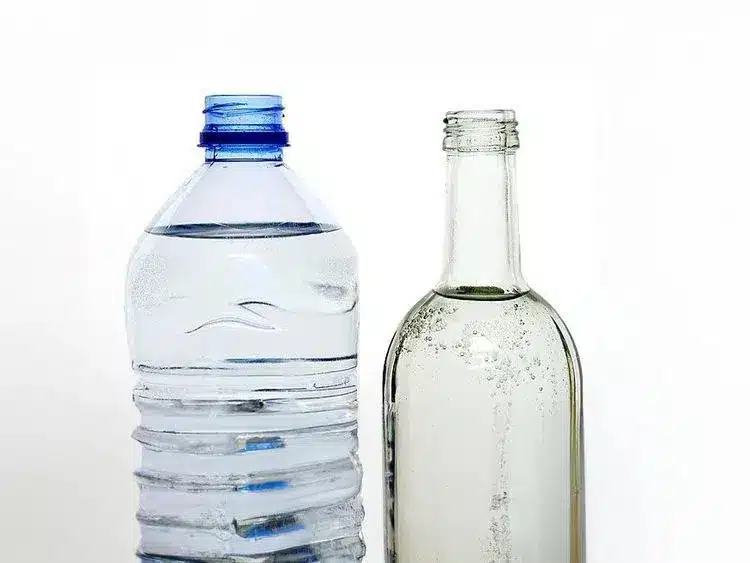The reusable bottle market is estimated to reach over 12 billion dollars all over the world by the year 2026 with the environmentally friendly ones taking the lead. It is a critical decision that brands must make, whether to remain with the conventional use of bottles made of plastic or to switch to silicone that is more sustainable, safe, and upscale. This choice is not only a question of functionality, but also a question of being aligned to the values of consumers, the pressure of the regulations, and profitability in the long term. Brands that are reusing and environmentally responsible are coming down to silicone bottles as the winner, which are made of food-grade platinum-cured silicone. This resource turns the silicone vs. plastic bottles dilemma into a data-based argument and assists B2B purchasers and brand proprietors make a decision about the material that will take their products to the next level in a changing market.
Overview Comparison: Silicone vs Plastic Bottles
The following is a summarized and quick-reference table of key differences to help you make your decision:
| Aspect | Silicone Bottles | Plastic Bottles (PET/HDPE) |
| Durability | High: Lasts 3–5 years; flexible, impact-resistant | Low: Deforms after 3–6 months; brittle over time |
| Safety | Excellent: FDA/LFGB certified, BPA-free, no leaching | Variable: Risk of BPA/phthalates; microplastics |
| Environmental Impact | Low: Reusable, recyclable, reduces waste | High: Single-use dominant; ocean pollution |
| Flexibility | Superior: Collapsible, temperature-resistant (-40°C to 230°C) | Limited: Rigid or semi-flexible; heat-sensitive |
| Branding Options | Extensive: Multi-color molding, embossing, laser engraving | Basic: Labels, basic printing; fades easily |
| Cost (per unit, 10K run) | $2.50–$6.00 (higher initial, lower lifetime) | $0.50–$1.50 (cheaper upfront, higher replacement) |
According to the data presented by Grand View Research, silicone reusability and compliance are pushing the transition towards plastic at 7 percent or more per year. Silicone is the ideal fit with the future of reusable water bottle trends with respect to sustainable packaging materials 2026.
Environmental Impact & Sustainability

Plastic bottles are as much as a contributing factor to the vast amount of ocean pollution (up to 8 million tons per year), and microplastics were identified in 93 percent of water samples of bottled water (Orb Media study). It is not particularly recycleable, with only 9 percent of all the plastic ever made actually being recycled (UN Environment Programme). In 2026, policies such as the EU green deal and U.S. plastic reduction bans will enforce a ban on single use plastics, moving the brands to alternatives.
Silicone bottles, on the other hand, are designed to last long. They are made of polymers made of silica, are not toxic, do not break down into harmful particles, and can be recycled through special programs (e.g., TerraCycle). One reusable silicone bottle will substitute 500-1,000 plastic bottles during its lifetime, which are thrown away in landfill and decreases landfill waste by 90 percent. Hydro Flask and Yeti brands have increased their sales by 20-30 percent through the use of eco-friendly silicone bottles, which are attractive to the Gen Z cohort who are conscious of green packaging. Being an OEM silicone bottle producer in China, factories are shifting towards closed-loop production to reduce silicone waste, and this will make the factories even more environmentally friendly.
Safety and Consumer Health

Health is not negotiable among consumers. Bottled water containers containing BPA or phthates are likely to leech chemicals under high temperature or under UV light-connected with endocrine interference (EPA findings). Even the so-called BPA-free plastics can include the derivatives, such as BPS, and the risks remain the same.
Silicone bottles that are used to store food eliminate these concerns. Silicone that has been platinum-cured is flawless to FDA 21 CFR 177.2600 and LFGB regulations, which means that there is no migration of toxins. It is naturally BPA-free, scentless and anti-bacterial. Its high heat tolerance to 230 deg C, and lack of deformation and off-gassing, ensures that it can be used with hot liquids. In the case of baby and sports products, LFGB-certified silicone, it gives the parents confidence-they can be sure that it is a safe drinking material. Independent tests indicate that silicone will emit no volatile after 1,000+ dishwasher cycles (e.g. way much better than plastic).
Durability and Reusability
Plastic bottles break, scratch, and lose their structure very fast, particularly when in a working condition. HDPE variants creep above 80deg C, which restricts versatility.

The rubber shows great silicone: compressibility without irreversible deformation means its elastic modulus of 2 meters drop survivability and extreme temperatures. The silicone bottle can be reused and still be in shape and seal up to 3-5 years with a daily use, compared to 3-6 months when plastic becomes cloudy or leaks. This durable eco product will lower the number of replacements and this will attract budget-friendly consumers. Silicone is usable in more than 10000 flexing cycles in OEM testing: collapsible designs in travel.
Branding and Aesthetic Flexibility
Aesthetics are the drivers of loyalty in high end markets. Plastic provides simple labelling, however, the colours fade and surfaces are easily scratched and brands perception decreases.
Pantone color matching gives the option of creating unique colors: designs in bottle-shaped silicone can give vivid and consistent colors; integrated molding allows multi-color effects in absence of seamlines. Such techniques as embossing, debossing, silk-screen or laser engraving produce tactile high end finishes. The differentiation possible in brands can be through textured grips or glow in-dark. This makes silicone the perfect brand packaging in the lifestyle, fitness, and baby categories- consider the colorful lines of MINISO or the technology-built bottles of Huawei.

Cost and Manufacturing Considerations
Plastic prevails on silicone vs plastic production costs, which is cheap with mass production using PET blow-molding. The lifetime value however changes the story. The cost of investment in silicone moulds (1000-3000 dollars) takes the form of amortization over long-lasting product thus resulting in 40-60 percent reduction in the total ownership cost.
The China improvements in OEM silicone bottles cost have fallen; low MOQ (500 units) and 2-week sampling time has become new standard. Silicone factory China efficiencies, such as LSR injection, cause fewer defects to less than 0.5%. At 10,000 quantities, silicone in unit form goes down to $3-4, competitive (in branding, retail mark up 20-50) which take into consideration branding mark-ups.
Matching Material with Brand Identity
- Mass-Market/Low-Cost: Plastic will be good for short-life promotions, yet the company will face regulatory imposition in 2026.
- Eco/ Premium Brands: Silicone conforms to values – enhances perceived value, warrants 30-100 percentage premiums, and builds loyalty.
Computation of lifecycle value: a 5-unit (silicone) bottle that retails at We are selling at 25 would fetch a profit of 20 when applied in 3 years as compared to the repeat sale proposed by plastic.
Conclusion – The Future Is Silicone
Silicone is more sustainable, safer, more durable and can be branded, and this is why it is the strategic choice of 2026 when the reusable-driven market will become the reality. As consumers insist on bottles of their drinks to be BPA-free and governments tighten the screw on plastic bottles, silicone places brands on the pathway of growth.
Seeking a reliable manufacturer of eco-friendliness bottles? Haotian Silicone is an OEM silicone bottle China master since 2015 that offers customizable solutions that are FDA/LFGB-certified. custom silicone bottle have been enabling shelve names such as Disney and P and G through our patented multi-color molding and ISO9001 processes. Reach US today to deploy your custom silicone bottle project.